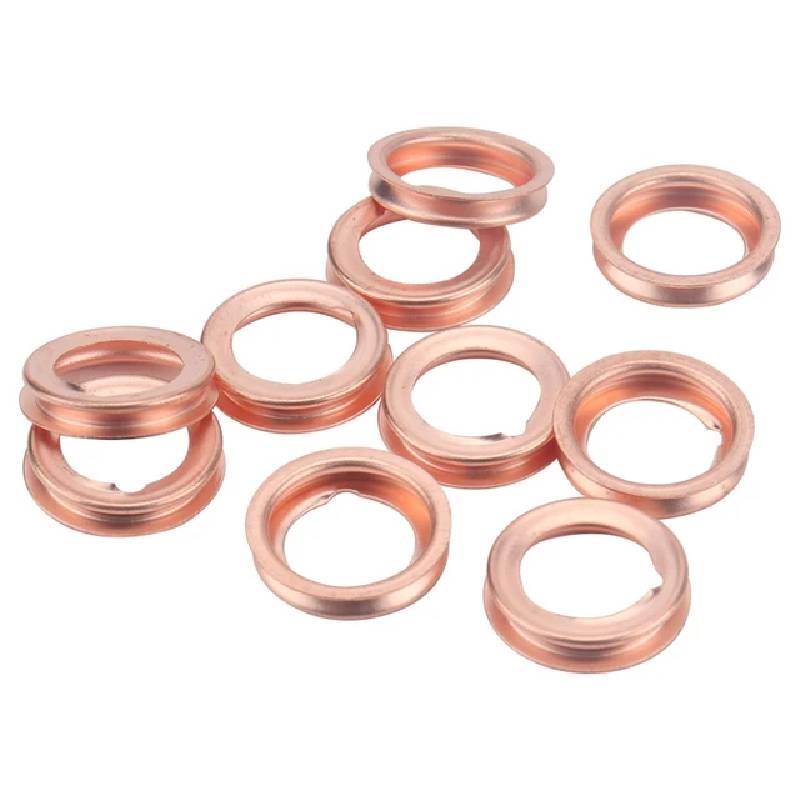Effective Solutions for High Pressure Oil Seals to Enhance Machinery Performance and Durability
Understanding High Pressure Oil Seals
High pressure oil seals are critical components in a variety of mechanical systems, particularly in industries dealing with hydraulic systems, automotive applications, and machinery. These seals are specifically designed to withstand high-pressure environments while preventing the leakage of oil and other lubricants. Understanding the characteristics, functionalities, and applications of high pressure oil seals can greatly enhance their effectiveness and the longevity of the systems they are used in.
What are High Pressure Oil Seals?
High pressure oil seals, also known as lip seals or rotary seals, are components designed to restrict the flow of fluids while operating under significant pressure. Typically made from materials like nitrile rubber (NBR), fluorocarbon (FKM), or polyurethane, these seals possess a robust structure to endure harsh operating conditions. The design often features a flexible lip that maintains contact with the shaft, creating a barrier that prevents fluids from escaping and contaminants from entering.
Key Features
1. Material Composition The choice of materials for high pressure oil seals is crucial. Nitrile rubber is commonly used for its excellent resistance to oil and fuel, while fluorocarbon offers greater thermal stability and chemical resistance. Engineering-grade materials are vital for achieving optimal sealing performance and longevity.
2. Pressure and Temperature Ratings High pressure oil seals are rated for specific pressure ranges and temperature extremes. It's essential to select a seal that meets or exceeds the operational demands of the application to avoid seal failure.
3. Design Variants Oil seals come in various designs, including single-lip and double-lip configurations. Double-lip seals provide an additional layer of protection against contaminants and fluid ingress, making them suitable for more challenging operating environments.
4. Dynamic and Static Sealing High pressure oil seals are capable of providing effective sealing in both dynamic (moving) and static components. This versatility is crucial in applications where there are rotating shafts or oscillating components.
Applications
high pressure oil seals

High pressure oil seals are utilized across a wide range of industries
1. Automotive In vehicles, high pressure oil seals are found in engines, transmissions, and hydraulic systems. They ensure that engine oil remains within the engine block, thus improving efficiency and performance.
2. Hydraulics In hydraulic machinery, these seals play a vital role in maintaining system pressure. Proper sealing prevents hydraulic fluid from leaking, thus ensuring the efficiency and effectiveness of hydraulic cylinders and pumps.
3. Manufacturing In various manufacturing machines, high pressure oil seals help maintain lubrication within gears and bearings, which is essential for smooth operation and reduced wear and tear.
4. Aerospace In the aerospace industry, high pressure oil seals are critical for ensuring the reliability of hydraulic systems in aircraft, particularly in landing gear and other high-stress components.
Maintenance and Replacement
To ensure the longevity of high pressure oil seals, regular inspections are required. Signs of wear or damage, such as cracks, corrosion, or signs of fluid leaks, should be addressed promptly to prevent system failures. Replacing worn seals before they fail can save significant costs associated with downtime and repairs.
Conclusion
High pressure oil seals are indispensable in modern mechanical systems, offering reliability and efficiency in various applications. Their ability to withstand tough conditions while providing effective sealing makes them crucial for the proper functioning of machinery across multiple industries. When selecting or maintaining these seals, it is important to consider the specific requirements of the application, including pressure, temperature, and the nature of the fluid being sealed. Investing in high-quality oil seals can enhance operational performance and extend the life of equipment, ultimately leading to improved productivity and reduced maintenance costs.
-
The Ultimate Guide to Car Repair Kits: Tools and Essentials Every Driver Should Own
News Aug.01,2025
-
The Complete Guide to Oil Pan Gaskets: Sealing Engine Leaks the Right Way
News Aug.01,2025
-
Preventing Oil Leaks: A Complete Guide to Oil Pan Gaskets and Drain Seals
News Aug.01,2025
-
Everything You Need to Know About Oil Pan Gaskets and Drain Plug Seals
News Aug.01,2025
-
Essential for Car Owners: How to Use a Car Repair Kit to Deal with Minor Breakdown
News Aug.01,2025
-
Comprehensive Guide to Engine Oil Sump Gaskets and Related Seals
News Aug.01,2025
-
The Ultimate Guide to Boat Propeller Bearings and Trailer Wheel Bearings
News Jul.31,2025
Products categories















